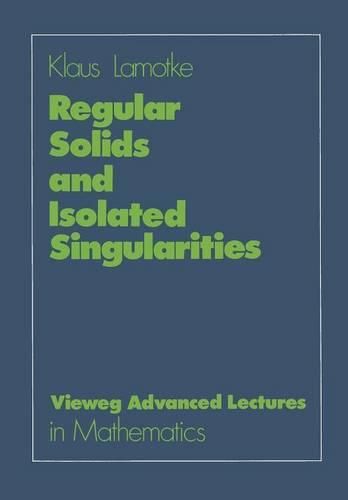Readings Newsletter
Become a Readings Member to make your shopping experience even easier.
Sign in or sign up for free!
You’re not far away from qualifying for FREE standard shipping within Australia
You’ve qualified for FREE standard shipping within Australia
The cart is loading…






This title is printed to order. This book may have been self-published. If so, we cannot guarantee the quality of the content. In the main most books will have gone through the editing process however some may not. We therefore suggest that you be aware of this before ordering this book. If in doubt check either the author or publisher’s details as we are unable to accept any returns unless they are faulty. Please contact us if you have any questions.
The last book XIII of Euclid’s Elements deals with the regular solids which therefore are sometimes considered as crown of classical geometry. More than two thousand years later around 1850 Schl fli extended the classification of regular solids to four and more dimensions. A few decades later, thanks to the invention of group and invariant theory the old three- dimensional regular solid were involved in the development of new mathematical ideas: F. Klein (Lectures on the Icosa- hedron and the Resolution of Equations of Degree Five, 1884) emphasized the relation of the regular solids to the finite rotation groups. He introduced complex coordinates and by means of invariant theory associated polynomial equations with these groups. These equations in turn describe isolated singularities of complex surfaces. The structure of the singularities is investigated by methods of commutative algebra, algebraic and complex analytic geometry, differential and algebraic topology. A paper by DuVal from 1934 (see the References), in which resolutions play an important rele, marked an early stage of these investigations. Around 1970 Klein’s polynomials were again related to new mathematical ideas: V. I. Arnold established a hierarchy of critical points of functions in several variables according to growing com- plexity. In this hierarchy Kleinls polynomials describe the simple critical points.
$9.00 standard shipping within Australia
FREE standard shipping within Australia for orders over $100.00
Express & International shipping calculated at checkout
This title is printed to order. This book may have been self-published. If so, we cannot guarantee the quality of the content. In the main most books will have gone through the editing process however some may not. We therefore suggest that you be aware of this before ordering this book. If in doubt check either the author or publisher’s details as we are unable to accept any returns unless they are faulty. Please contact us if you have any questions.
The last book XIII of Euclid’s Elements deals with the regular solids which therefore are sometimes considered as crown of classical geometry. More than two thousand years later around 1850 Schl fli extended the classification of regular solids to four and more dimensions. A few decades later, thanks to the invention of group and invariant theory the old three- dimensional regular solid were involved in the development of new mathematical ideas: F. Klein (Lectures on the Icosa- hedron and the Resolution of Equations of Degree Five, 1884) emphasized the relation of the regular solids to the finite rotation groups. He introduced complex coordinates and by means of invariant theory associated polynomial equations with these groups. These equations in turn describe isolated singularities of complex surfaces. The structure of the singularities is investigated by methods of commutative algebra, algebraic and complex analytic geometry, differential and algebraic topology. A paper by DuVal from 1934 (see the References), in which resolutions play an important rele, marked an early stage of these investigations. Around 1970 Klein’s polynomials were again related to new mathematical ideas: V. I. Arnold established a hierarchy of critical points of functions in several variables according to growing com- plexity. In this hierarchy Kleinls polynomials describe the simple critical points.